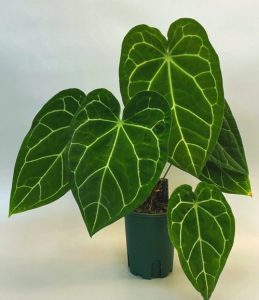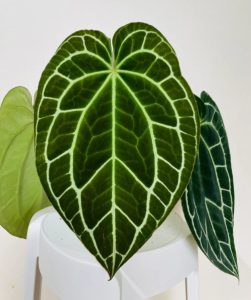- English
- Chinese
- French
- German
- Portuguese
- Spanish
- Russian
- Japanese
- Korean
- Arabic
- Irish
- Greek
- Turkish
- Italian
- Danish
- Romanian
- Indonesian
- Czech
- Afrikaans
- Swedish
- Polish
- Basque
- Catalan
- Esperanto
- Hindi
- Lao
- Albanian
- Amharic
- Armenian
- Azerbaijani
- Belarusian
- Bengali
- Bosnian
- Bulgarian
- Cebuano
- Chichewa
- Corsican
- Croatian
- Dutch
- Estonian
- Filipino
- Finnish
- Frisian
- Galician
- Georgian
- Gujarati
- Haitian
- Hausa
- Hawaiian
- Hebrew
- Hmong
- Hungarian
- Icelandic
- Igbo
- Javanese
- Kannada
- Kazakh
- Khmer
- Kurdish
- Kyrgyz
- Latin
- Latvian
- Lithuanian
- Luxembou..
- Macedonian
- Malagasy
- Malay
- Malayalam
- Maltese
- Maori
- Marathi
- Mongolian
- Burmese
- Nepali
- Norwegian
- Pashto
- Persian
- Punjabi
- Serbian
- Sesotho
- Sinhala
- Slovak
- Slovenian
- Somali
- Samoan
- Scots Gaelic
- Shona
- Sindhi
- Sundanese
- Swahili
- Tajik
- Tamil
- Telugu
- Thai
- Ukrainian
- Urdu
- Uzbek
- Vietnamese
- Welsh
- Xhosa
- Yiddish
- Yoruba
- Zulu
- Kinyarwanda
- Tatar
- Oriya
- Turkmen
- Uyghur

Bright floral buds and glossy green foliage make anthurium (Anthurium Clarinervium) a preferred indoor plant. This plant not only brightens inside environments but also represents friendliness and kindness. If you learn the right care techniques, this delicate-looking plant is really very straightforward to maintain.

Anthurium
Light: Provide your anthurium the correct lighting
Among the elements most crucial for Anthurium Clarinervium’s development is light. Bright, indirect light is preferred by anthuriums, which enables them to keep their leaves in good color and their capacity to keep flowering. Anthuriums are ideal for interior settings near east or west windows, which may provide the plant with enough light either from morning or evening sun.
On the other hand, too much direct sunshine could scorch Anthurium Clarinervium leaves and flower buds, thereby losing their gloss and seeming burned. Thus, keep anthuriums from direct exposure to bright sunlight from south-facing windows away from If the ambient light is weak—that is, in a north-facing room or an interior place with restricted light—you might want to think about augmenting the light with artificial light sources like fluorescent lights or LED plant lights. Artificial illumination allows anthuriums to retain good growth and blooming in low-light conditions.
This might indicate inadequate light if you find that the leaves of anthuriums have become dull or that the flower buds no longer show presence. To aid in the recovery of the anthurium, consider shifting it to a better light source or extending the length and strength of the light during this time. Keeping the anthurium healthy mostly depends on routinely changing the plant’s location to guarantee that it gets suitable light.
Temperature and humidity: The health of Anthurium Clarinervium depends mostly on the surroundings
Two key environmental variables influencing anthurium development are temperature and humidity. Native to tropical rainforests, anthuriums demand warm, humid growth conditions. Between 18 to 27°C is the best temperature range; this helps anthuriums remain vivid and keep flowering.
Keeping the indoor temperature not lower than 15°C should be especially important in winter as too low a temperature may prevent the development of anthuriums and potentially induce dormancy or death of the plant. Furthermore avoid putting anthuriums beside windows and doors that are chilly or aired as the invasion of cold air could seriously harm the plant. Move the anthurium to a warm, wind-proof room or use a humidifier to raise the humidity in the air and thus prevent the dry winter air from adversely impacting the plant.
Anthurium Clarinervium development depends also on humidity, a crucial element. Anthurium leaves may seem curling or dry-tipped in dry surroundings. Often misting the anthurium’s leaves with water will help to raise the humidity of the surrounding environment. Furthermore, arranging the anthurium next to a humidifier or a water basin surrounding the plant will assist to raise the humidity in the air and provide a growth state more in line with its natural habitat.
Ensuring that the humidity surrounding the anthurium is kept around 60% can assist individuals living in drier climes ensure the plant grows normally. Maintaining the proper temperature and humidity can help the anthurium to appear most lovely in your house or business.
Learning the watering techniques for anthuriums
Anthuriums are water-sensitive, hence appropriate watering is essential to guarantee their good development. Though not very damp, anthuriums often like to have the soil moist. Watering anthurium is best done waiting until around two to three centimeters of the soil surface is dry. Make sure the water can completely seep into the ground and empty extra water through the drainage holes every time you water.
Anthuriums’ health depends on drainage holes as they help to avoid root rot by preventing water from gathering at the pot’s bottom. Should your pot lack drainage holes, it is advised to choose another pot with drainage capability or spread a layer of stones at the bottom to boost drainage.
Anthuriums’ water requirement could rise in the hot summer, hence the frequency of watering should also rise in line. On the other hand, the temperature is lower in winter, the growth rate of plants slows down, and the frequency of watering may be suitably lowered; still, the soil should be somewhat wet to help the plant to retain vitality in the dry winter environment.
Furthermore, room temperature water or rainfall is a suitable alternative for watering anthuriums as cold water could aggravate the plant’s regular development by stimulating its root system. Should you discover that the leaves of anthuriums start to yellow or fall off, this might indicate either too little or too much water. Changing the frequency and watering technique will assist the plant get back in health at this point.
Choose the appropriate soil matrix
Anthurium grows from soil, hence the basis for it is soil; thus, the health of the plant depends on the choice of soil matrix. Anthurium likes organic-rich, well-drained soil, which can provide enough nutrients and keep the roots from getting inundated with water.
You may decide to plant anthurium in mixed soil, like peat soil, pine needles and perlite in proportion. This loose and well-ventilated soil structure helps to avoid root rot very well. Furthermore, the use of organic fertilizers may provide anthurium the required nutrients to support its blooming and development. Frequent fertilization of the plant will assist to maintain the anthurium in active growth, particularly in spring and summer at the height of growing season.
Changing the soil for anthurium every two years is advised when repotting to help to prevent nitrogen loss and soil aging. Should you discover that the soil’s drainage performance has dropped or that the plant’s development rate has slowed down, this might be indicators of a repot. To give the anthurium’s roots more room to flourish, use a somewhat bigger pot for repotting.

Anthurium Clarinervium
Allow the Anthurium Shine
With its exquisite floral blooms and deep green foliage, the anthurium gives any interior space vitality and color. The Anthurium will be readily cared for and flourish in your house or business with correct light, temperature, humidity, and watering schedule. Learning these care techniques will enable you to become an expert in the maintenance of the Anthurium and bring this lovely plant to most beautiful in your living environment. Whether kept in a warm room or on a well-lit windowsill, the Anthurium may liven your life with a little of natural beauty.



